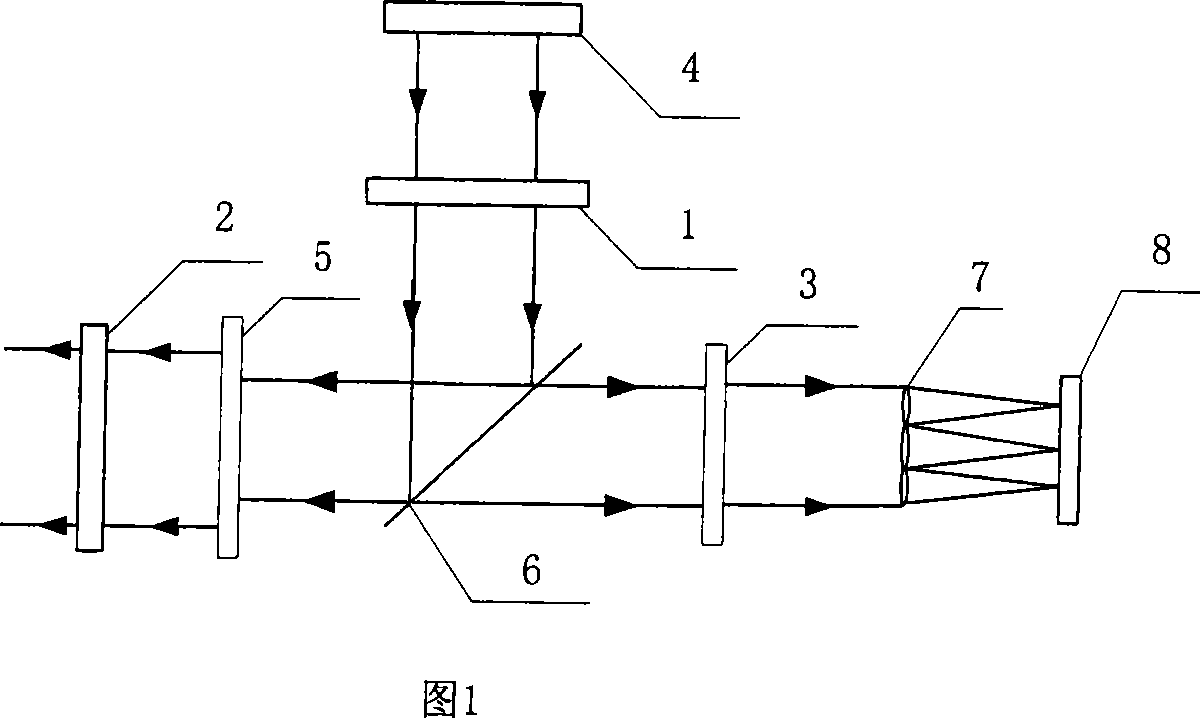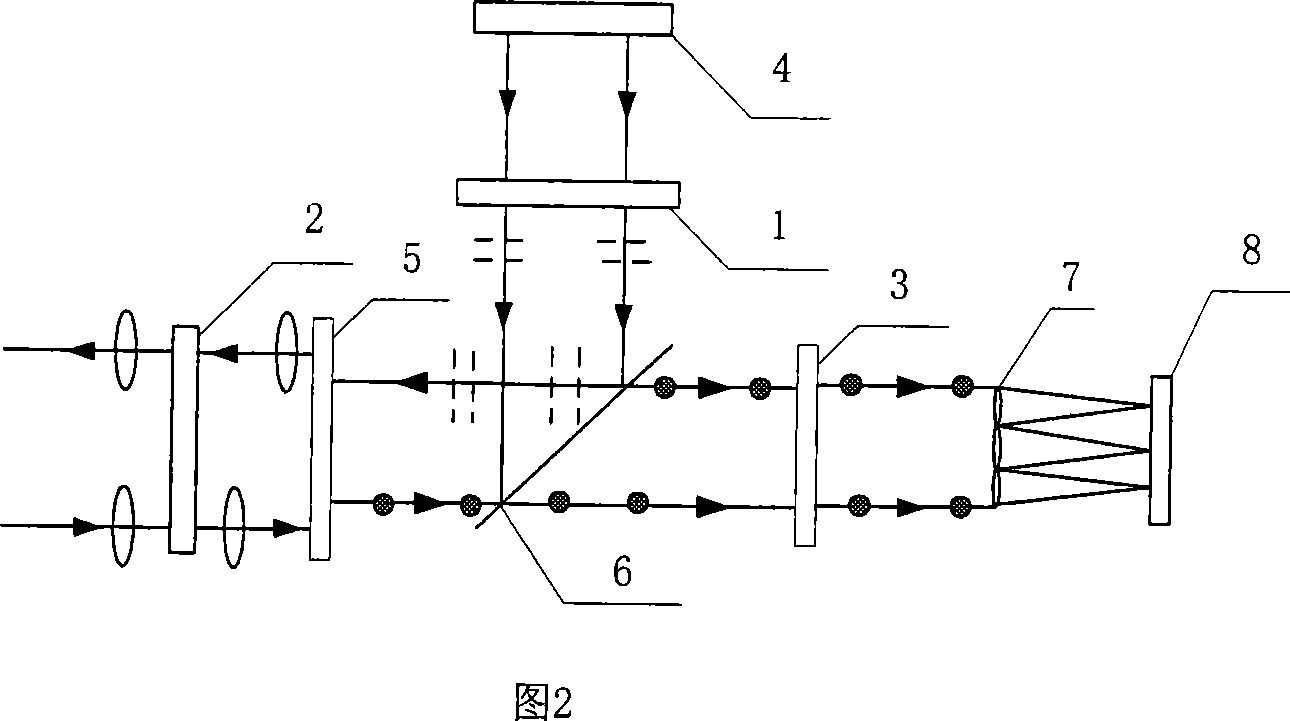Hartmann wavefront sensor capable of eliminating self-stray light of system
A technology for eliminating system and stray light, which is applied in the direction of transmitting sensing components, optics, instruments, etc. by using optical devices, can solve problems such as large measurement errors, improve measurement accuracy, and prevent stray light from entering the microlens array.
- Summary
- Abstract
- Description
- Claims
- Application Information
AI Technical Summary
Problems solved by technology
Method used
Image
Examples
Embodiment Construction
[0009] As shown in Figure 1, after the light emitted by the measurement light source system 4 passes through the polarizer 1, it passes through the beam splitter 6, the beam matching system 5, After the wave plate 2 exits from the system. When working, the light beam emitted by the system will return to the inside of the system after passing through the surface of the tested part, and then pass through the beam reduction system 5, After the wave plate 2 and the beam splitter 7, the beam is irradiated onto the microlens array 7, and finally imaged on the CCD 8. in The center wavelength corresponding to the wave plate corresponds to the light emitted by the measurement light source system, and the polarization analysis direction of the polarizer and the polarization direction of the polarizer are perpendicular to each other.
[0010] Fig. 2 is a principle diagram of eliminating stray light by using the present invention. First, the light emitted by the measuring light sou...
PUM
 Login to View More
Login to View More Abstract
Description
Claims
Application Information
 Login to View More
Login to View More - R&D
- Intellectual Property
- Life Sciences
- Materials
- Tech Scout
- Unparalleled Data Quality
- Higher Quality Content
- 60% Fewer Hallucinations
Browse by: Latest US Patents, China's latest patents, Technical Efficacy Thesaurus, Application Domain, Technology Topic, Popular Technical Reports.
© 2025 PatSnap. All rights reserved.Legal|Privacy policy|Modern Slavery Act Transparency Statement|Sitemap|About US| Contact US: help@patsnap.com


